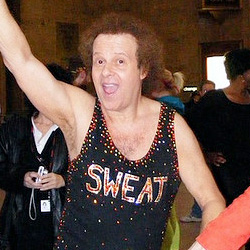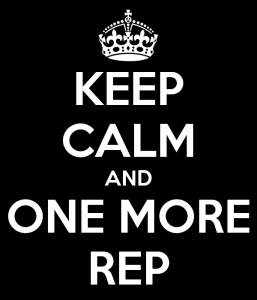
Workout v. Training
June 23, 2013 // Fitness, Wellness
If there is one health topic misunderstood by most people, it’s differentiating a workout from training. Working out is a vague term used to describe some sort of general exercise. Anything can be considered a workout; there are no expectations or principles. Training, however, denotes targeted, purposeful exercises that are measured by progression and follow a system of protocols to induce a specific adaptation. Training gets results.
It All Started With Great Marketing
Type “workout” into Google and you’ll get 225 MILLION results in less than three seconds. There is so much information available for anyone seeking improved health. You would think with all this information floating around that everyone who works out is guaranteed a great body, but you’d be mistaken. In fact, it is estimated that over 60% of gym go-er’s do not see any results after 3 months of effort. And these are the motivated people who have already adopted and bought into exercising! The dedicated disciplines of fitness face tough odds in changing their figure and health. How could this be?
Great marketing.
Yes, great marketing is to blame for these inconsistencies. Working out was once considered an underground cult of freaks who pumped iron until their muscles inflated to the point of burst. Now, workouts are popping up everywhere in all different forms taught by all different types of “experts.” Workouts are marketed as these fat-burning, body-sculpting, heart-pounding movements that are guaranteed to change your life. And because of good marketing, people have started using the term workout to describe almost any bit of exercise.
The Exercise Effect
Exercise becomes effective once you have determined your current fitness levels (strength, ability to handle certain exercises, endurance, etc.) and utilize the right exercise variables to help increase those levels.
Most workouts fail to understand this principle. Instead, workouts are used to describe any bit of exercise and variables. Anything is workout. Doing 30 jumping jacks is a workout. Running for 5 minutes is a workout. Doing some squats is a workout. These are examples of exercises, not workouts. The act of exercising fails to address the most important factor: PROGRESSION.
Progression is the strategic increase in difficulty of an exercise using one of the many variables involved in a movement:
-
Speed
-
Total Time-Under-Tension
-
Number of Repetitions
-
Number of Sets
-
Amount of Rest Time
-
Amount of Load (Weight/Resistance)
Without progression, there is no added challenge placed on the body that forces it to adapt.
When you exercise, you have the chance to stimulate your body to adapt by adding a new stress through exercise. But, this means that the exercise(s) must be outside of what you can handle. It [the exercise] needs to give your body a reason to change. So if you are just “working out”, how can you measure progression? If your workouts are random and do not follow any system of science, you could be putting in effort without adaption. Let me rephrase and clarify:
A workout that is a random collaboartion of exercises and movements does not give your body enough of a new stress to make it adapt. Working out without progressing is literally spending your energy on movement without reaping the benefits of exercising in the first place!
Our bodies are just byproducts of our habits, so how you look and operate is a reflection of what you do (or don’t do). That is why we have all seen those routined gym go’ers who “workout” every couple of days and yet still look the same. Same figure, same struggle to lose 5 lb., same exercises, same everything.
Remember, doing the same thing over and over again and expecting different results is known as…
Train Your Body
Training is the systematic approach of exercising using strategic, scientific variables of progression to stimulate a specific adaptation. Training is purposeful. Training is measured, assessed, and adjusted. Athletes train. Bodybuilders train. Fitness professionals train. Trainers train clients.
The difference between working out and training is progression. Working out does not guarantee there is progression, unlike training. Consider your current exercise program and analyze your patterns of progression. Are you training or just working out?
How To Train:
Every workout is a little harder than last time. Somehow. Someway.
Examples:
I did 10 push-ups last time. Good, do 11 today.
I did 5 sets of squats last time. Good, do 6 sets today.
I rested for a minute between exercises last time. Good, rest for less time today.
The Take-Away
It’s that simple. Give your body a reason to improve (progressive exercises) and it will respond.
Not sure how to turn your workouts into training? There are a ton of apps that help you track your exercises. I used to write all my weights down in a notebook. Now I just keep a running log in the notes section on my iPhone. You could simply just use a stopwatch and measure the duration of the exercise and rest. However you choose to measure your variables is up to you. Just remember to follow the rule of progression and you’ll see results.



